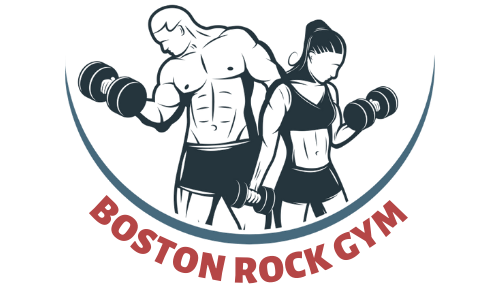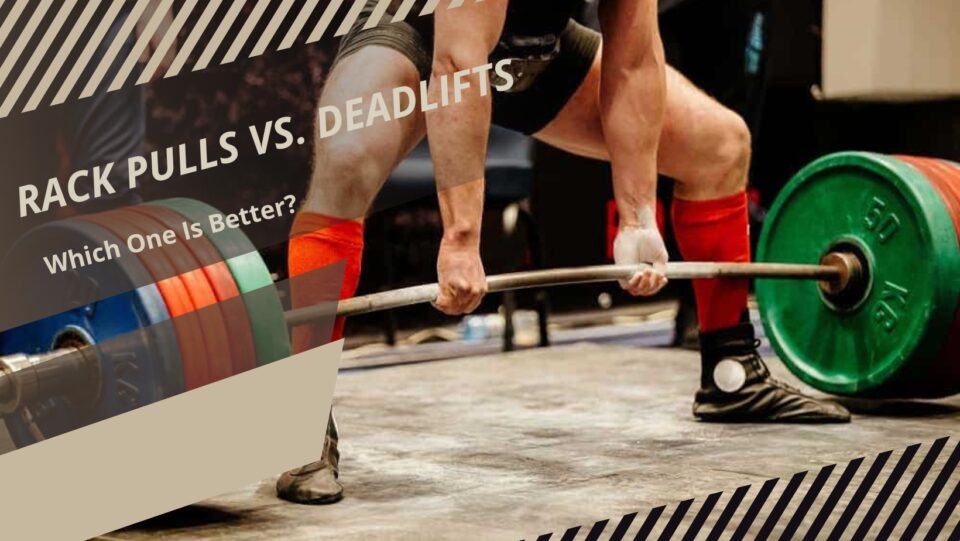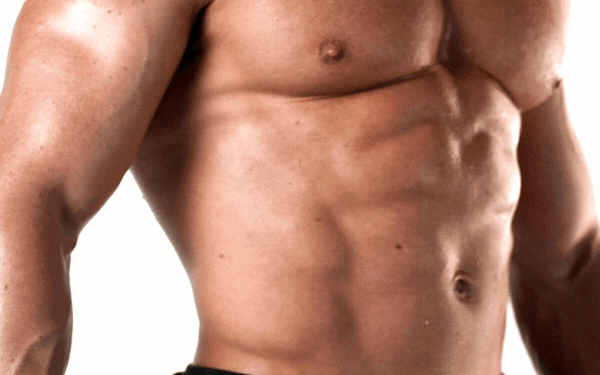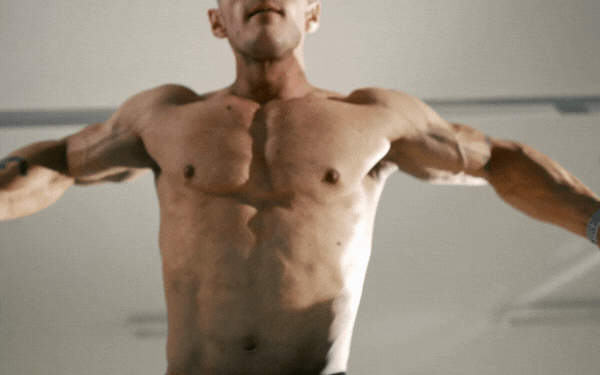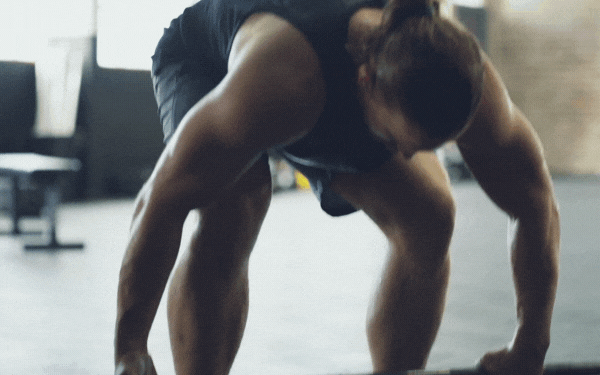Interested in learning more about rack pulls and deadlifts? Want to find out which of these two exercises is better and more effective? We got you covered! You can find a thorough explanation below, including info about what these two exercises are, what muscles they target, and so much more!
Contents
Rack Pulls
Rack pulls are a type of deadlift that emphasizes the top end of the range of motion. For this purpose, the barbell is placed on the safety pins within the squat cage. It resembles a block deadlift a lot. You cannot bring the barbell to the ground because of the placement of the pins. In other words, the rack pull only has a “partial range of motion.”
The objective is to put load ahead of a range of motion when conducting a partial range of motion. As a result, this exercise’s goal is to employ heavier weights than you ordinarily could accomplish from the floor. The rack pull is often done at a height of around knee level by lifters. Most people can start in this position.
However, based on the range of motion they wish to target, you could occasionally see lifters use the area slightly below or above the knee. The glutes and spinal erectors, which are the primary hip and back extensors, may be strengthened with the rack pull.
Additionally, if someone has trouble at the top of the deadlift, they may utilize the rack pull to concentrate on that area of the action. For powerlifters at least, the objective is to use the rack pull to eventually achieve a greater deadlift. The rack pull has several advantages. Take a look at the list below to see the most common ones:
- It can serve as an overload workout, which is a useful way to build strength
- If you have trouble at the top of the deadlift, it might focus on your weak spot
- It may be an excellent exercise for your back and glutes
- It may offer an alternative training stimulus that will encourage further adaptations
- In comparison to most forearm or hand workouts, it can strengthen your grip
- Rack pulls can shield your floor from the impact of the weights if you have a home gym
Deadlifts
In the gym, the deadlift is a standard workout. In addition to bodybuilders, Olympic weightlifters, and pretty much any athlete striving to become better at their sport, the deadlift is one of the competitive powerlifting motions. This is due to the fact that the deadlift has a wide range of practical applications, including the capacity to leap, run, and pick up things from kneeling to a standing posture.
The deadlift makes use of the entire range of motion in comparison to the rack pull. Compared to the rack pull, it needs higher knee extension, which means the quadriceps are worked more intensely, especially when the legs are extended off the ground. With deadlifting, you won’t be capable of lifting as much weight as you would when rack pulling, but you’ll be using more muscles in the process, making it a terrific compound exercise.
Driving the weight up from the ground to a fully locked-out posture where the hips, knees, and back are straight is the objective of the deadlift. Similarly to the previously-mentioned exercise, the deadlift also has numerous benefits. Here they are:
- Since it is a complex exercise, you get the most benefit for your money by strengthening your hip, thigh, and back muscles
- If you don’t have a lot of time to exercise, this is an excellent workout since it will engage a lot of muscle in a short amount of time
- It has been demonstrated to enhance athletes’ ability to jump
- It has been demonstrated to stop muscular wasting in older people
- Increased bone density has been demonstrated to be beneficial for contact sports
- It has been utilized as an efficient exercise for rehabilitation after lower-limb surgery
Rack Pulls Vs. Deadlifts – Key Differences
When it comes to the main differences between these two workouts, you will find that there is more than one. However, we listed the 4 crucial ones so that you have a better understanding of which exercise to perform the next time you hit the gym. Take a look below to find out what they are:
1. Muscles Targeted
Because both rack pulls and deadlifts include the hip hinge, they are strikingly comparable exercises. This indicates that the gluteal and spinal muscles are used in both of these workouts. They both engage a nearly identical set of muscles, but they focus differently on each individual muscle.
Rack pulls have an emphasis on strengthening the upper shoulder and back. This consists of the latissimus dorsi (lats), rhomboids, and spinal erectors, among other muscles.
Deadlifts work the glutes, mid back, and lower back. Deadlifts require a lot of focus on the lower body to provide force in order to achieve lockout at the top of the exercise because of their broad range of motion. Compared to rack pulls, the deadlift involves a larger range of knee flexion and extension. The lower body must use more energy as a result, which increases the activation of the hamstring and quad muscles.
2. Range of Motion
The range of motion is one of the key distinctions between deadlifts and rack pulls. Because the exercise mirrors the upper half of the deadlift, rack pulls are sometimes referred to as partial deadlifts. Performing block pulls with the barbell already elevated for the lifter is comparable to doing this.
Starting with the barbell lifted, the rack pull is performed. The lifter’s objective and the muscles they are targeting determine the height of the elevation. It may be raised a few inches above the knees, at knee level, or just below the knees.
The lifter cannot set the barbell on the ground because of the elevation. When compared to deadlifts, rack pulls give the lifter a partial range of motion that enables them to lift greater weights. As a result, the muscles and extensors in the hips and back are more strongly activated and developed.
The lifter concentrates on the weakest aspect of the deadlift action, which is often getting to the deadlift’s lockout point. This exercise is frequently used as a supplement to deadlifts.
3. Strength
One of the most important complex exercises for building muscle in the upper and lower body is the deadlift. Its entire range of motion and maximum knee extension is very useful for everyday activities like leaping, running, and picking up heavy things off the ground.
The deadlift is well-known for helping athletes’ vertical leap in sports. Additionally, it can boost bone density, which is crucial for success in contact sports like football and basketball. The general increase in muscle mass also aids in keeping elderly people’s bones and muscles from deteriorating and wasting away.
Rack pulls are designed particularly to grow, hone, and improve the back muscles. The lifter may add more weight and develop back hypertrophy more quickly because of the partial range of motion. The use of equipment like squat racks or power racks is frequently necessary while practicing rack pulls because they are not intended to improve functional strength as deadlifts do. This assistive device is necessary because it shifts the burden of a significant portion of the movement from the lower body to the back muscles.
4. Difficulty
Deadlifts are one of the most effective workouts for boosting strength, despite the fact that they can be exhausting due to their complete muscle engagement. Through higher testosterone levels, which in turn encourage the production of growth hormones, it is a sort of extension exercise that strengthens the muscles.
However, due to the many types of deadlifts and the ideal weight for doing deadlifts correctly and safely, beginners need guidance when performing deadlifts. Deadlift variations include the stiff-legged deadlift, deficit deadlift, sumo deadlift, and Romanian deadlift. To reduce the chance of hurting the back muscles and the spine, each of these variations has to be performed in perfect form.
Rack pulls are simpler to accomplish than deadlifts because of their constrained range of motion and raised barbell. It is the ideal workout for a newcomer who wants to master mechanics but has little fitness experience.
A barbell that has been raised up to two inches above the knees can be used for the rack pull. Until he is ready to do the entire lift, the lifter can merely concentrate on performing the upper half of the deadlift.
Conclusion
Wondering which one is better—rack pulls or deadlifts? The truth is that both rack pulls and deadlifts come with a set of advantages and disadvantages you should be aware of. If you’re a beginner, doing rack pulls may be a wise decision considering that they are easier to do and aren’t risky like deadlifts.
However, if you had some time and experience, and you aren’t unfamiliar with tougher workout regimes, you can perform deadlifts or a variation of deadlifts and rack pulls. Listen to your body and start incorporating these workouts carefully to minimize the risk of injury.
